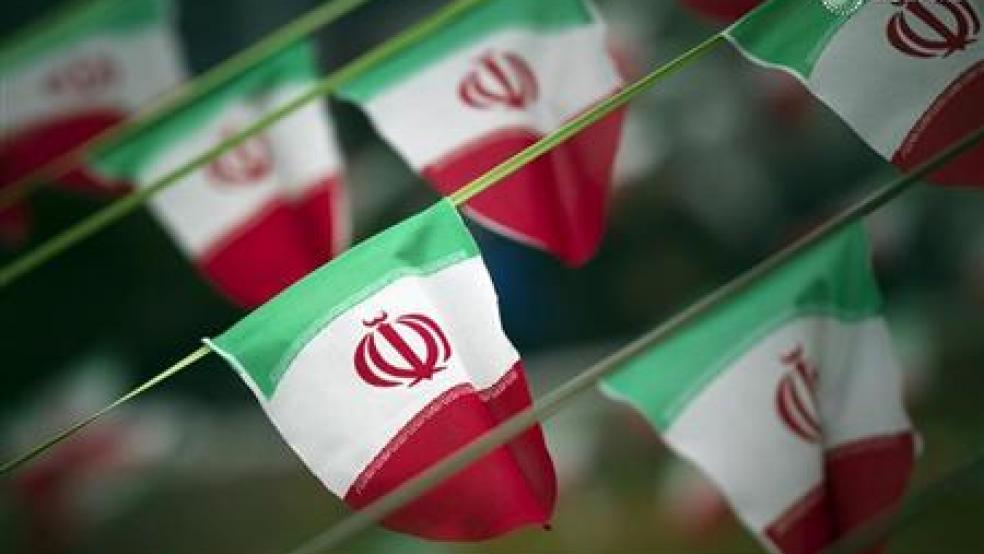Iran’s supreme leader is pressing for an almost immediate lifting of economic sanctions against his country if a final agreement is reached to halt temporarily Tehran’s development of a nuclear weapon – and he’s got reasons.
A combination of tough economic sanctions by the U.S., Europe and the U.N. dating to the U.S.-Iran hostage crisis of 1979 to 1981 have seriously stunted Iran’s economy and frozen literally hundreds of billions of dollars’ worth of assets and oil revenues. More recently, the U.N. has slapped Iran with additional sanctions for violating the Nonproliferation Treaty of 1967.
Related: New Concerns that Obama Will Cut a Bad Deal with Iran
Treasury Secretary Jack Lew recently noted that since 2012, Iran’s economy is 15 percent to 20 percent smaller than it would have been without the sanctions. Tehran has also lost $160 billion of oil revenues and the use of an additional $100 billion in assets being held in restricted accounts outside the country.
According to a report last January by Kenneth Katzman, a specialist in Middle East affairs at the Congressional Research Service, the tough sanctions on trade have caused many private Iranian businesses to close, leaving about one in every five Iranian workers unemployed.
The impact of the sanctions on oil sales by Iran has also been substantial. While Iran sold about 2.5 million barrels of oil a day in 2011, during the past year it has averaged just 1.1 million barrels a day, according to Katzman. Roughly half the decline resulted from sanctions by the European Union, which went from purchasing 600,000 barrels a day to almost zero. China and India, meanwhile, cut back their purchases of Iranian oil by a combined 31 percent in a show of support for U.S. policy against Iran.
Related: Rare Bipartisanship Rules the Day on Iran Nukes Deal
Finally, U.S. allies have cooperated in freezing vast sums of Iranian assets. Two years ago, Iran held an estimated $100 billion in various currencies in accounts outside the country, but only about $20 billion of those funds were accessible to Tehran. The rest was held in banks adhering to sanctions.
With all sides now agreeing that the final round of talks will extend well beyond Tuesday’s official deadline, Secretary of State John F. Kerry and Iranian negotiators are seeking an agreement that would lift the sanctions in return for Tehran curtailing any program to develop a nuclear weapon over the next decade and a half.
Last week, Ayatollah Ali Khamenei – Iran’s supreme leader – publicly rejected the idea that Iran would have to meet its obligations before the sanctions were lifted by the United States, Europe and the U.N. Khamenei’s demand is totally out of line with a tentative agreement reached April 2 by the U.S., Iran and four other major countries engaged in the talks. According to the New York Times, American officials have estimated it could take six months to a year for Iran to implement provisions of the tentative deal – including slashing the number of centrifuges it operates, reducing its nuclear fuel pile and providing international inspectors with access to Iranian scientists and documents.
Related: A Nuclear Deal with Iran Starts to Look Likely
Here are highlights of the major U.S. economic sanctions Iran is desperately trying to shed, compiled recently by the Council on Foreign Relations:
Financial/Banking U.S. sanctions administered by the Treasury Department have sought to isolate Iran from both the U.S. and international financial systems. Under the 2011 Comprehensive Iran Sanctions, Accountability and Divestment Act, foreign-based financial institutions or subsidiaries that deal with sanctioned banks holding Iranian assets are barred from conducting deals in the United States or with the U.S. dollar.
By late 2011, the U.S. government moved to prevent importers of Iranian oil from making payments through Iran’s central bank, with few exceptions. Other measures restrict Iran’s access to foreign currencies so that funds from oil importers can only be used for bilateral trade with the purchasing country or to access humanitarian goods.
Oil Exports Along with pressure on Iran’s access to international financial systems, curtailing oil revenue has been the principal focus of the Obama administration. Prior to 2012, half of Iran’s government revenues came from oil exports and comprised one-fifth of the country’s Gross Domestic Product. Since then, its oil exports have been cut by more than half.
Related: Americans Support Nuclear Deal with Iran, but Don’t Think It Would Work
Trade The U.S. has had an embargo in place since 1995 that prohibits most domestic companies from trading with or investing in Iran. The Obama administration carved out an exception to the embargo for the sale of consumer telecommunications equipment and software.
Asset freezes and travel bans In the wake of the September 11, 2001, terrorist attacks, President George W. Bush froze the assets of entities found to be supporting international terrorism. This list included dozens of Iranian individuals and institutions, including banks, defense contractors and the Revolutionary Guard Corps.
Weapons development The Iran-Iraq Arms Nonproliferation Act of 1992 calls for sanctioning any person or entity that assists Tehran in weapons development or acquisition of “chemical, biological, nuclear, or destabilizing numbers and types of advanced conventional weapons.”
Top Reads from The Fiscal Times:





